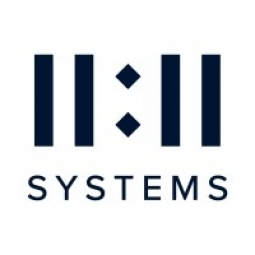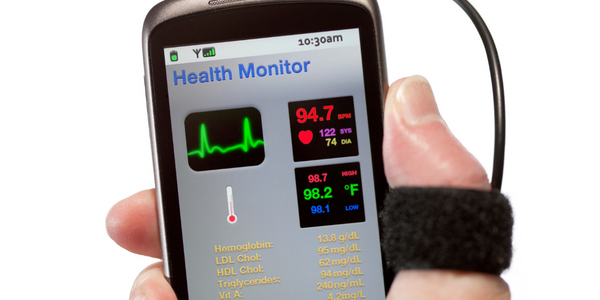Customer Company Size
Mid-size Company
Region
- America
Country
- United States
Product
- iland Cloud Services
Tech Stack
- Cloud-based Disaster Recovery
Implementation Scale
- Enterprise-wide Deployment
Impact Metrics
- Cost Savings
- Productivity Improvements
Technology Category
- Infrastructure as a Service (IaaS) - Cloud Computing
Applicable Industries
- Healthcare & Hospitals
Applicable Functions
- Business Operation
Services
- Cloud Planning, Design & Implementation Services
About The Customer
The organization is a family-owned and privately held company that has been in operation for more than 150 years. It leads a family of companies that create efficiencies within healthcare supply systems in the US and internationally. One of these companies provides customized, comprehensive, and integrated contact and call center services for biotech/pharmaceutical and medical device companies. Services include providing core drug/device product information, adverse experience reporting, handling product complaints and assisting with clinical trials recruiting. The organization’s call center employs highly qualified personnel to answer medically-related questions from anyone - ranging from end-users of prescription drugs to pharmacists at the store front selling these drugs to patients and primary care physicians prescribing them to patients.
The Challenge
The organization, a family-owned healthcare supply systems company, had an in-house disaster recovery plan for data and applications. However, when the organization acquired a local company, the IT department was tasked with taking over the new subsidiary’s IT. The senior systems engineer knew he needed to expand the existing disaster recovery plan to cover the new subsidiary’s data and systems but ran into a problem almost immediately. The equipment of the new subsidiary was old and the capital needed to purchase the additional equipment for migrating their data to the organization's environment was not approved.
The Solution
The organization’s IT team decided that the best course of action was to find a cloud service provider they could replicate the data to. Following research into a number of vendors, iland was selected. The company’s nightly replication is now sent to iland’s cloud environment. That strategy has enabled it to recall its old replication equipment from the data center, move it back to the corporate network and put it into production mode to facilitate the addition of the new subsidiary’s data network. The selection of iland as the organization’s cloud-based DR provider, came down to competitive pricing, iland’s expertise, and the sales and support process that the company’s IT team experienced.
Operational Impact
Quantitative Benefit

Case Study missing?
Start adding your own!
Register with your work email and create a new case study profile for your business.
Related Case Studies.

Case Study
Hospital Inventory Management
The hospital supply chain team is responsible for ensuring that the right medical supplies are readily available to clinicians when and where needed, and to do so in the most efficient manner possible. However, many of the systems and processes in use at the cancer center for supply chain management were not best suited to support these goals. Barcoding technology, a commonly used method for inventory management of medical supplies, is labor intensive, time consuming, does not provide real-time visibility into inventory levels and can be prone to error. Consequently, the lack of accurate and real-time visibility into inventory levels across multiple supply rooms in multiple hospital facilities creates additional inefficiency in the system causing over-ordering, hoarding, and wasted supplies. Other sources of waste and cost were also identified as candidates for improvement. Existing systems and processes did not provide adequate security for high-cost inventory within the hospital, which was another driver of cost. A lack of visibility into expiration dates for supplies resulted in supplies being wasted due to past expiry dates. Storage of supplies was also a key consideration given the location of the cancer center’s facilities in a dense urban setting, where space is always at a premium. In order to address the challenges outlined above, the hospital sought a solution that would provide real-time inventory information with high levels of accuracy, reduce the level of manual effort required and enable data driven decision making to ensure that the right supplies were readily available to clinicians in the right location at the right time.

Case Study
Gas Pipeline Monitoring System for Hospitals
This system integrator focuses on providing centralized gas pipeline monitoring systems for hospitals. The service they provide makes it possible for hospitals to reduce both maintenance and labor costs. Since hospitals may not have an existing network suitable for this type of system, GPRS communication provides an easy and ready-to-use solution for remote, distributed monitoring systems System Requirements - GPRS communication - Seamless connection with SCADA software - Simple, front-end control capability - Expandable I/O channels - Combine AI, DI, and DO channels

Case Study
Driving Digital Transformations for Vitro Diagnostic Medical Devices
Diagnostic devices play a vital role in helping to improve healthcare delivery. In fact, an estimated 60 percent of the world’s medical decisions are made with support from in vitrodiagnostics (IVD) solutions, such as those provided by Roche Diagnostics, an industry leader. As the demand for medical diagnostic services grows rapidly in hospitals and clinics across China, so does the market for IVD solutions. In addition, the typically high cost of these diagnostic devices means that comprehensive post-sales services are needed. Wanteed to improve three portions of thr IVD:1. Remotely monitor and manage IVD devices as fixed assets.2. Optimizing device availability with predictive maintenance.3. Recommending the best IVD solution for a customer’s needs.

Case Study
HaemoCloud Global Blood Management System
1) Deliver a connected digital product system to protect and increase the differentiated value of Haemonetics blood and plasma solutions. 2) Improve patient outcomes by increasing the efficiency of blood supply flows. 3) Navigate and satisfy a complex web of global regulatory compliance requirements. 4) Reduce costly and labor-intensive maintenance procedures.

Case Study
Cloud-based healthcare solution for Royal Philips
Royal Philips wanted to launch its cloud-based healthcare solution HealthSuite Digital Platform in China to deliver services to help cope with challenges related to urbanization and population growth. Philips wanted to achieve this goal by combining mobile, cloud computing and big data technologies. To bring this platform and product to market, Philips required cloud computing and local technical service capabilities in China, in addition to a flexible IT infrastructure that could handle user requests.








